Bluegrass Splash: Inside Louisville's Storied Lakeside Swim Club

America is full of sports wonders, but they aren't always easy to find. The October 2021 issue of Sports Illustrated spotlights Hidden Gems across the country, from a Wimbledon replica in heartland farm country to a custom-built sandlot baseball field in Texas. As it turns out, there's nothing like feeling the magic of sports in places you'd least expect.
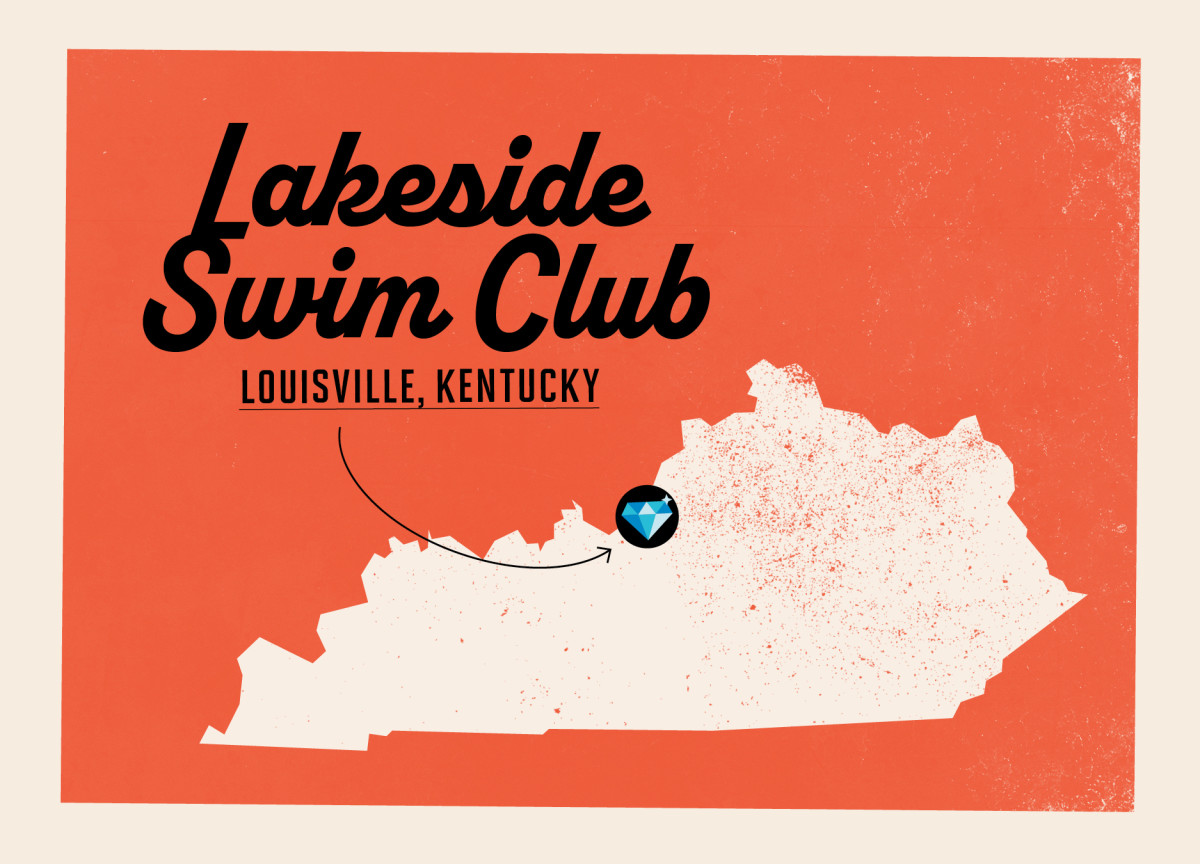
From the sidewalk on Trevilian Way, the coolest swim club in the country is a myth. You cannot see a diving board or hear a splash. Aside from an unusual volume of parked cars, the upper-middle-class neighborhood surrounding it offers no clues. There is something behind that stone-pillared entryway, but it certainly doesn’t seem like much.
Then you walk through an iron gate, and the 97-year-old aquatic wonderland that is Lakeside Swim Club sprawls before you. It is a place rich with competitive swimming history and nationally renowned—but most of all it screams fun on a grand scale. “You come inside,” says Mike DeBoor, coach of the Lakeside SeaHawks swim team since 1994, “and there’s a wow factor.”
Nearly three acres of fertile frolicking territory await in an old limestone quarry that’s nestled among an eclectic collection of houses, ivy-covered 40-foot cliff walls and towering redbud and sugar maple trees. In front, two-lane Trevilian Way meanders through Louisville’s Belknap neighborhood, connecting busy Bardstown Road on one end and the tidy campus of Bellarmine University on the other. BLACK LIVES MATTER lawn signs are commonplace, but Senate Minority Leader Mitch McConnell might be driving past them on the way to his nearby home.
Lakeside is a pool for purists, with no golf or tennis attached. The concession stand serves burgers and dogs, the locker rooms are modest and, if you arrive wearing anything fancier than a T-shirt and flip-flops, you’re overdressed. Parking is whatever you can find on the streets, which often means a healthy walk. Memberships are always in demand—there are currently about 3,800 families—and run from $500 to $2,000 a year, depending on the size of the family.
In nonpandemic times, more than 1,000 people splash at Lakeside daily between 10 a.m. and 9 p.m., from Memorial Day weekend to Labor Day weekend. It has been an epicenter of teenage social life for decades, including a couple of summers in the 1970s when the cool crowd included a rambunctious boy named Tom Mapother—now better known as Tom Cruise.
From the infants in the enclosed baby pool to the seniors in the water-walking lane, Lakeside offers something for everyone: three areas for lap swimming, including 10 50-meter lanes; a nationally elite club team (the SeaHawks), a less intense feeder program (the Quarry Gators) and a masters team for all adult ages; water volleyball and water basketball (plus two dryland hoops courts that can also convert to volleyball); a diving area with low and high boards; a raft-only channel for lazy-day floating; a “bullpen” for roughhousing; a workout room overlooking the expanse; picnic tables and grills; a yoga room; aerobics and tai-chi classes; and a sauna. There are Sunday concerts, “dive-in” movie nights and a dog-swimming day after the last day the pool is open for the season.
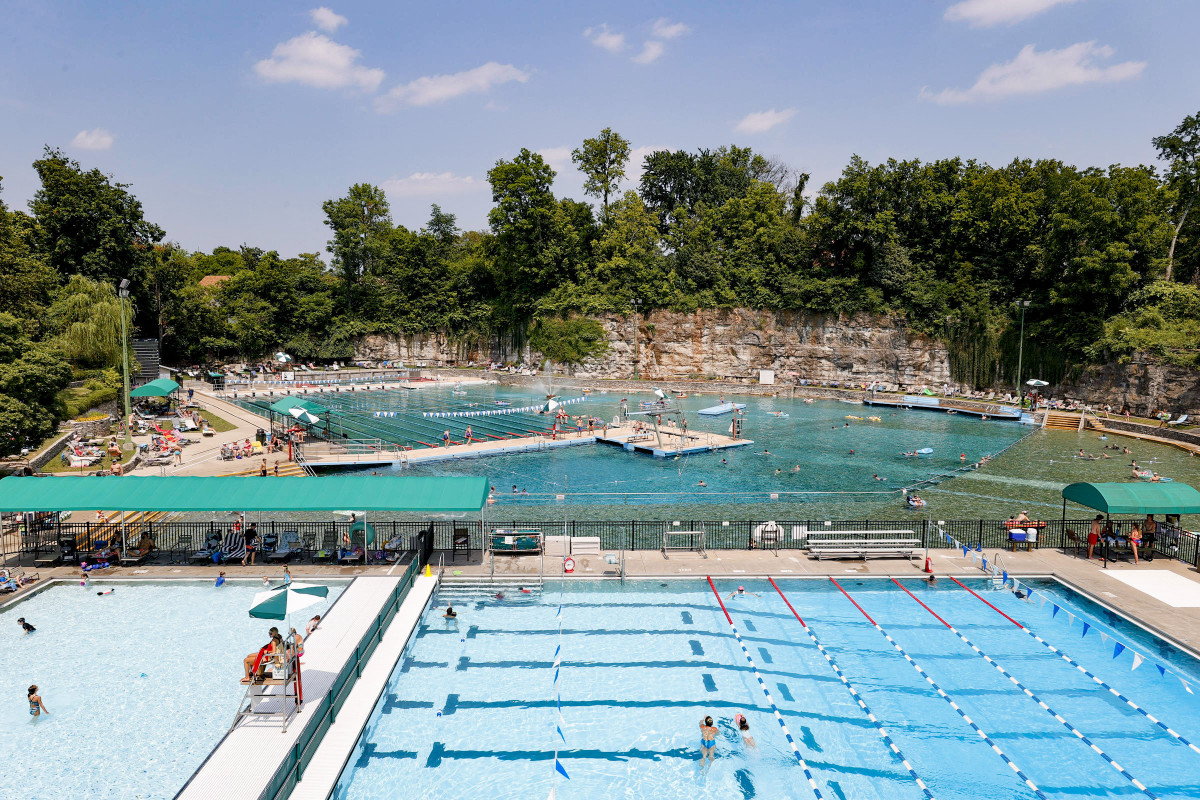
In a world where pools tend to come in standard sizes and locations, Lakeside’s converted quarry stands out. When it was incorporated as a private club in the 1920s, the quarry lake—now 13 feet deep at its greatest depth—was home to black bass and other aquatic life. The water was dark and the bottom sandy. Over time, it became domesticated. A filtration system now circulates 3.5 million gallons of clear, chlorinated water every four to six hours. The bottom was finished in concrete (although still rough-hewn in many areas). A conventional eight-lane pool, bubbled during the winter for lap swimming, was built at one end.
Lakeside also holds a unique place in competitive water sports: It is home to the oldest annual meet in the U.S. (93 years and counting). “Everyone in swimming has heard about the quarry,” says Arizona State swim coach Bob Bowman, who mentored Michael Phelps to a record 23 Olympic gold medals. “Either you’ve been there, or you want to go there.”
Mike DeBoor had the Lakeside national team powering through practice on a recent July morning in preparation for a sectional meet in Greensboro, N.C. Watching from the deck were coaches from Notre Dame and Louisville, part of the steady flow of college recruiters who come here every summer to watch Lakeside’s best, not all of whom belong to the club. There are 43 Lakeside alums currently swimming at the NCAA level, the latest products of a perennial power far removed from the usual coastal swimming hotbeds.
“One of the reasons kids come to us from the community is that tradition,” says DeBoor, who coaches a team of 300 age-group swimmers. “That leads us as a staff to raise our expectations to meet that tradition. We act like we’ve been there before, because we have been there before.”
The SeaHawks churned through their workout beneath a pair of banners: one commemorating the club’s 11 Olympians and the other honoring the newest member of that group, Stanford senior freestyler and Tokyo 2020 silver medalist Brooke Forde. (Who, yes, happens to be my daughter.) Lakeside has had at least one swimmer qualify for seven of the last 11 Summer Games, going back to 1980. This Olympic tradition dates to 1940, when Mary Moorman Ryan (“the undisputed queen of American distance swimmers,” according to the Associated Press) and Ann Hardin both made the U.S. team.
The club’s competitive roots go back even further. In 1928, a decade before Lakeside hosted the men’s national championship, the first “Lakeside Carnival” was held, featuring races and “fancy diving” competitions. (Lakeside also was an early pioneer in synchronized swimming.)
That 1928 Carnival, which the Courier-Journal covered extensively, attracted more than 1,500 spectators. In various iterations that competition has been held at Lakeside ever since. (It’s been called the Ohio Valley Championships since ’54.) Through the Depression, World War II and even the pandemic of 2020, America’s oldest annual swim meet has gone on.
Last summer the field was reduced to just Lakeside swimmers in an intrasquad meet, but amid the masks and social distancing the club had timers and judges and winners and losers, keeping the streak alive. “Tradition is a real important word in Lakeside life,” says club general manager Mary Graves, “and we wanted to maintain that.”
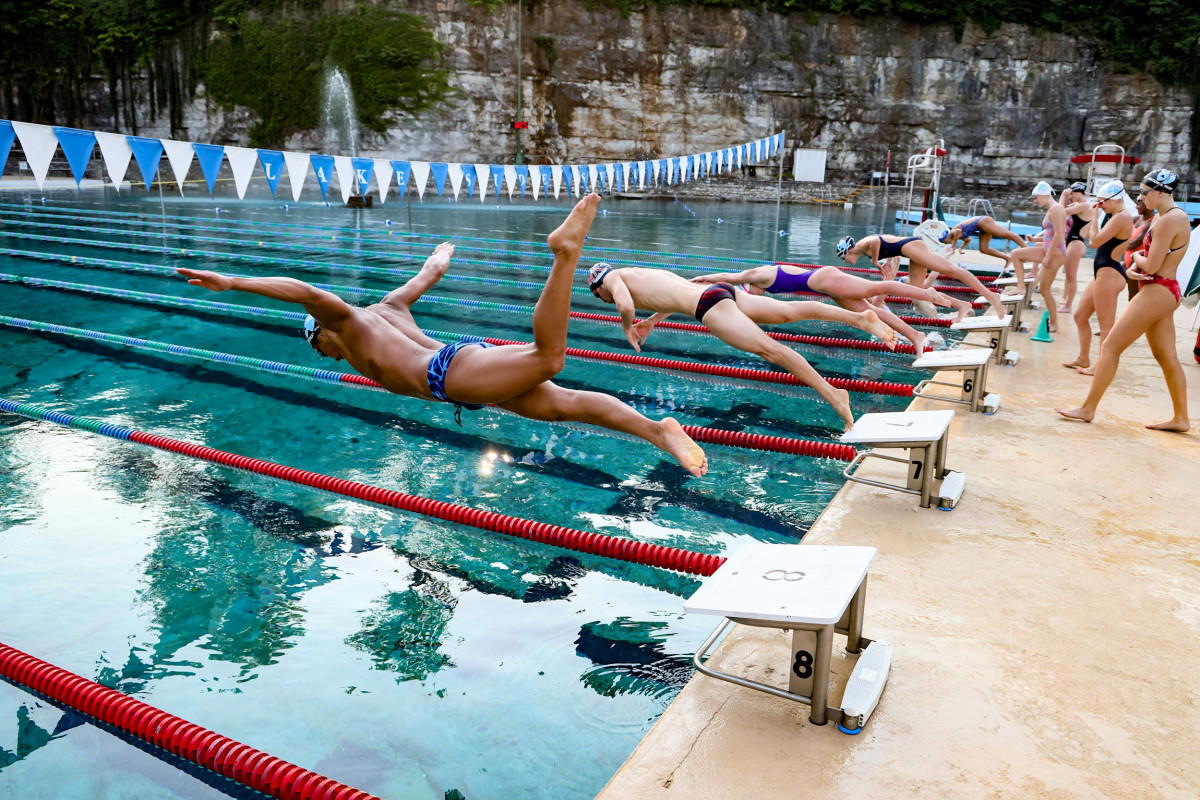
Teams have come from across the nation and Canada to compete in the meet. Six of the U.S. Olympians in Tokyo swam in the OVC, including 2020 gold medalist Blake Pieroni and silver and bronze medalist Lilly King. But the greatest of all competitors was the greatest of all Lakeside SeaHawks, Mary T. Meagher.
Meagher was the 10th of 11 children raised in Louisville, and she began her career at Lakeside rival Plantation. On the verge of quitting the sport, Meagher switched to Lakeside and a hard-driving young coach named Dennis Pursley. World records and gold medals ensued—but not without a few growing pains.
“They didn’t have racing lines on the bottom of the pool, and the water was dark,” says Meagher, now 56. “It was deceiving. Everyone struggled running into the lane lines. It took me a while to figure out what going straight felt like.”
Once Meagher mastered that, she was soon on her way to becoming Madame Butterfly. She set her first world record in that discipline at 14, then missed a chance for multiple Olympic gold medals a year later when the U.S. boycotted the 1980 Moscow Games. (Lakeside teammate and fellow butterflyer Lisa Buese also missed out on those Games.)
In 1981, Meagher smashed the world records in both the 100- and 200-meter fly, setting marks that would last for nearly two decades—an eternity in the swimming world. She went on to win three gold medals in L.A. in ’84 and a silver and bronze in Seoul in ’88.

She was the perfect pupil for Pursley, who piled on the yardage in workouts. He gave her ridiculous practice sets—say, three 800-meter butterflies—and she never backed down. “I was a rule follower, and if Denny told me to do something, I’d do it to the point where I’d throw up,” she says. “He was a drill sergeant, someone who could intimidate you. But he smiled and laughed enough that you knew he had your best interests at heart.”
He did have some quirks, though. Occasionally swimmers would arrive for morning practice and find Pursley sleeping on the poolside trampoline. During one cold early-season session he silenced the kids’ complaints by jumping into the water fully clothed, then coached soaking wet for two hours. And then there was the subzero, pre-cellphone winter day when Pursley’s junker wouldn’t shift into drive and he had no way of reaching anyone at the pool to say he’d be late. So he got the car to operate in reverse and drove backward several miles down Taylorsville Road.
“I had a stiff neck for about a week after that,” the 71-year-old Pursley says.
Pursley would go on to become USA Swimming’s first national team director, in 1989, leading the U.S. contingent at the Barcelona Games in ’92. He later coached the British Olympic team in 2012 and at the University of Alabama from ’12 to ’19.
“To this day, there’s no place I’ve worked that has a bigger piece of my heart than Lakeside,” Pursley says. “We kind of grew up together.”
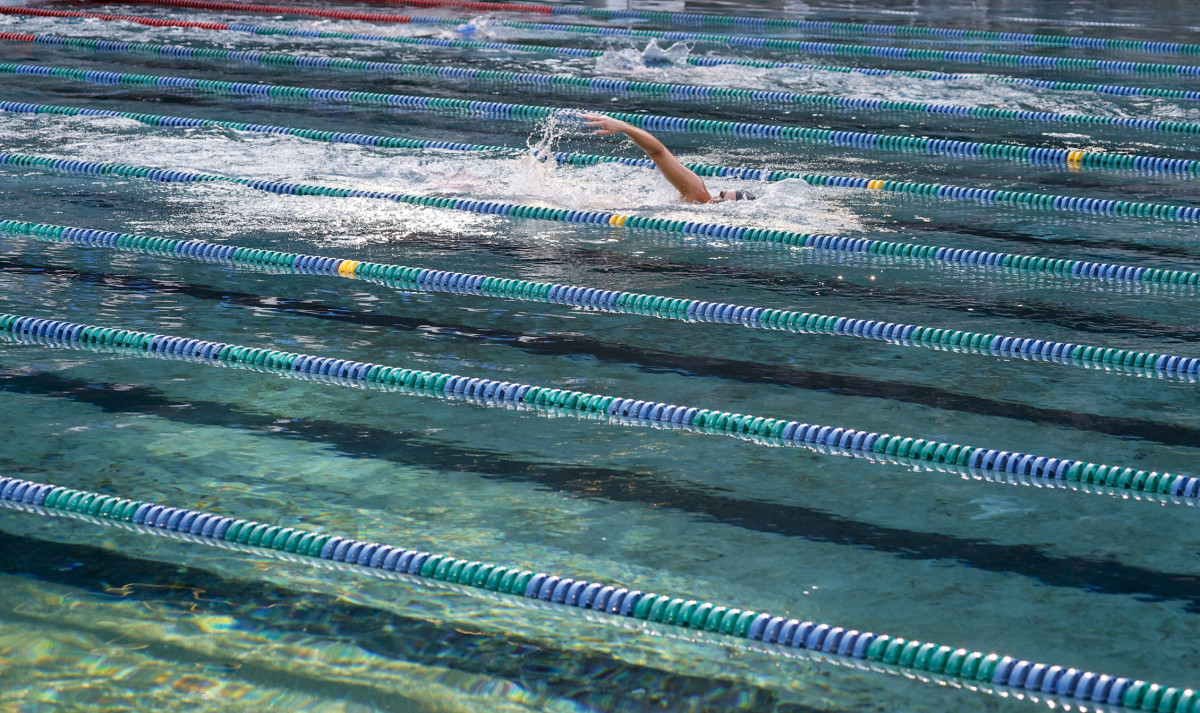
The person who really grew up with Lakeside? That would be Graves, the general manager. Her first visit was as a 1-year-old, in 1957. Her family lived on Eastview, which runs along the back of the club above those cliff walls. She’s been at Lakeside ever since.
Graves remembers the days before the filtration system was modernized, when algae grew in the water along the rock walls. There were a lot of algae fights, and a lot of blond swimmers who wound up with green hair. Now one of her joys is watching families grow up: parents taking their kids to the baby pool, then to the steps leading into the shallow end of the lake, then the diving well, then having them swim across deep water to a floating dock.
Graves and her staff field hundreds of calls every spring, asking, How do we join? Fact is, all new members must be sponsored by a “certificate” member, a group of about 180 who primarily live in the neighborhood and thus have higher rank due to enduring months of swimmers parking in front of their homes. Graves estimates that most certificate members have their own waiting lists of about a dozen people angling for membership, a reminder that as cool as Lakeside is, not everyone has access.
Telling those families no is the hard part of the job. Even harder was telling everyone no in 2020 and shutting down almost the entire facility for the summer. The club allowed only limited adult lap swimming in the in-ground pool. The vast quarry was empty and dry.
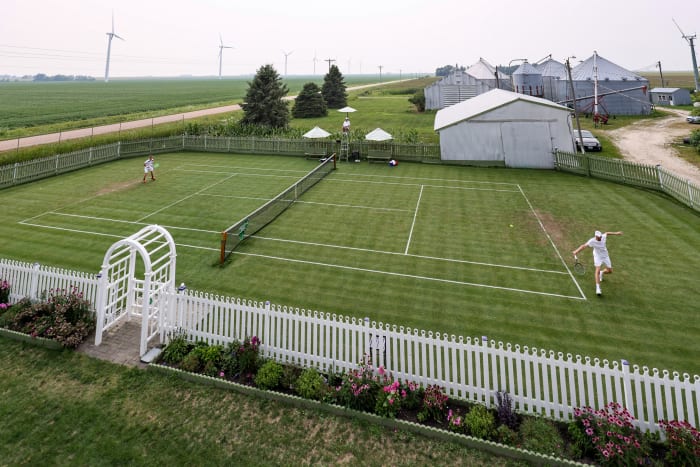
The All Iowa Lawn Tennis Club is a "whimsical replica" of Wimbledon, as the court's creator puts it.
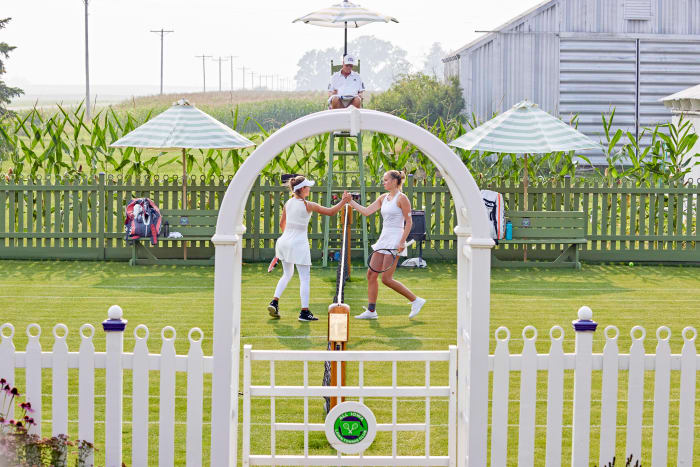
Grass tennis courts are rare in the United States, and farmer Mark Kuhn's creation is an even rarer non-private lawn.

At the Long Time, a sandlot baseball field near Austin, the score isn't as important as the vibe.

Hand-painted signs give the Long Time a nostalgic, rustic feel.

Kentucky's Lakeside Swim Club has produced a staggering number of Olympic swimmers, including a Tokyo 2020 medalist.

Lakeside is known for its competitive pedigree, but the converted rock quarry is just as famous for its gorgeous setting amid 40-foot cliffs.

Elston Gene Howard Field, named for the Yankees' first Black player, is built in the shadow of the team's new stadium—and aligns with the original House that Ruth Built.

There are three diamonds at the Bronx park for baseball and softball, one of which features a piece of the original Yankee Stadium facade.

Detroit City FC plays its home games at Hamtramck's Keyworth Stadium, which the club's supporters helped rebuild.

After going fully pro in 2020, third-division Detroit City FC has won multiple trophies, including a 2021 league title.

The diamond portrayed in the 1989 film "Field of Dreams" is the quintessential hidden gem, but the film site is now a popular tourist attraction—and in August, hosted a Major League Baseball game.

Thousands of fans watched the White Sox and Yankees compete in MLB's Field of Dreams game this summer.

There are few basketball courts like Rucker Park in New York City. In the 1960s and ’70s, future NBA legends like Earl Monroe and Julius Erving took on the city’s street elite in playground director Holcombe Rucker’s summer tournament.

Rucker Park had humble beginnings, but the blacktop is now famous across the hoops world.

Retired farmer Mark Kuhn, who started building his grass court in 2002, spends around 12 hours a week maintaining the All Iowa Lawn Tennis Club.

Kuhn was first drawn to tennis as a boy, when he heard a broadcast of Wimbledon over his grandfather's radio.

The Texas Playboys, a team of artists and creative types, plays their home games at the Long Time.

Hundreds of Texas Playboys season-ticket holders come not only to watch the Playboys face teams from around the region but also to catch whatever other performances might be in store from a club full of creatives—say, an acoustic set from a player’s new record during the seventh-inning stretch.

The Lakeside SeaHawks are the Louisville club's top-flight swim team.

There's nothing quite like Lakeside's converted rock quarry. “Either you’ve been there, or you want to go there," says Arizona State swim coach Bob Bowman, who mentored Michael Phelps to a record 23 Olympic gold medals

Kids in the Bronx are able to run in the footsteps of Babe Ruth, Lou Gehrig, Mickey Mantle and Derek Jeter at Elston Gene Howard Field, which is part of Macombs Dam Park.

A sign behind the backstop of one diamond at Elston Howard Field quotes Lou Gehrig's famous speech: "Today I consider myself the luckiest man on the face of the earth."

Detroit City FC's branded beer is Smoke Delay IPA, named for the—you guessed it–fan-induced smoke delays that often accompany home matches.

Detroit City FC's Northern Guard marches half a mile through Hamtramck to Keyworth Stadium on match days.

The White Sox beat the Yankees in this year's Field of Dreams game.

Over the years, Rucker Park has become world-famous. Bill Clinton and David Stern even stopped by in 2001 for the Entertainers Basketball Classic, which carries on the old Rucker tournament’s legacy.

Texas Playboys founder (and pitcher) Jack Sanders is also the Long Time's designer. He never stops tinkering with the ballpark's layout.

The Long Time is popular enough around Austin that the ballpark has sponsors and offers concessions.

Lakeside Swim Club has produced 11 Olympians over the years, including 2020 silver medalist Brooke Forde.

Thousands of tennis players have flocked to Kuhn's farm to play on the family's grass court, including University of Iowa associate tennis coach Daniel Leitner.

These days, the All Iowa Lawn Tennis Club is also a tribute to Kuhn's late son, Alex.

All that remains of New York’s Polo Grounds is a set of stairs that descends Coogan’s Bluff down to the housing complex that stands where the ballpark once did. Originally built in 1913, the John T. Brush stairway, named for the Giants’ owner who died in 1912, led down to a ticket booth.

The Detroit City Futbol League, a coed adult circuit, predates the club's senior team and includes volunteering incentives that can impact the standings.

Keyworth Stadium, the first Works Progress Administration project in Michigan, was opened in 1936 by President Franklin D. Roosevelt.
With fresh appreciation after a year of suffering, Graves likes to walk to the back corner of the fully reopened facility. She’ll sit down at picnic table No. 67 and “survey my domain.” With the cliff walls at her back, she can observe almost the entire property.
She’ll watch lap swimmers of all ages, from the elite to the slow-motion movers. She’ll see kids tentatively edging to the end of the diving board, then dropping in and surfacing with looks of joy. She’ll take in the spirited water volleyball battles. She’ll watch the rafters floating in reverie, the ice cream eaters, the book readers in lounge chairs.
And in her 64th year here, Graves will listen to the shrieks, the laughter and the splashing, the timeless audio loop of this chlorinated dreamscape, where the same sounds have been echoing off the walls for nearly a century.
More Hidden Gems:
• Welcome to the Lone Star State's Sandlot Revolution
• Iowa's Court of Dreams is More Than a Wimbledon Replica
• How Detroit City FC Fans Built Their Own Club
